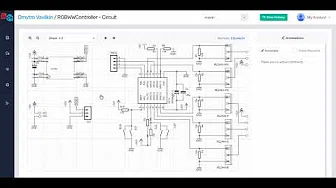Files
Scanning the repository...
Last update 8 years 9 months
by Hu-Cheng Lee
| FileslibraryTimerOneexamplesFanSpeed | |
|---|---|
| .. | |
| FanSpeed.pde |
FanSpeed.pde#include <TimerOne.h> // This example creates a PWM signal with 25 kHz carrier. // // Arduino's analogWrite() gives you PWM output, but no control over the // carrier frequency. The default frequency is low, typically 490 or // 3920 Hz. Sometimes you may need a faster carrier frequency. // // The specification for 4-wire PWM fans recommends a 25 kHz frequency // and allows 21 to 28 kHz. The default from analogWrite() might work // with some fans, but to follow the specification we need 25 kHz. // // http://www.formfactors.org/developer/specs/REV1_2_Public.pdf // // Connect the PWM pin to the fan's control wire (usually blue). The // board's ground must be connected to the fan's ground, and the fan // needs +12 volt power from the computer or a separate power supply. const int fanPin = 4; void setup(void) { Timer1.initialize(40); // 40 us = 25 kHz Serial.begin(9600); } void loop(void) { // slowly increase the PWM fan speed // for (float dutyCycle = 30.0; dutyCycle < 100.0; dutyCycle++) { Serial.print("PWM Fan, Duty Cycle = "); Serial.println(dutyCycle); Timer1.pwm(fanPin, (dutyCycle / 100) * 1023); delay(500); } }








